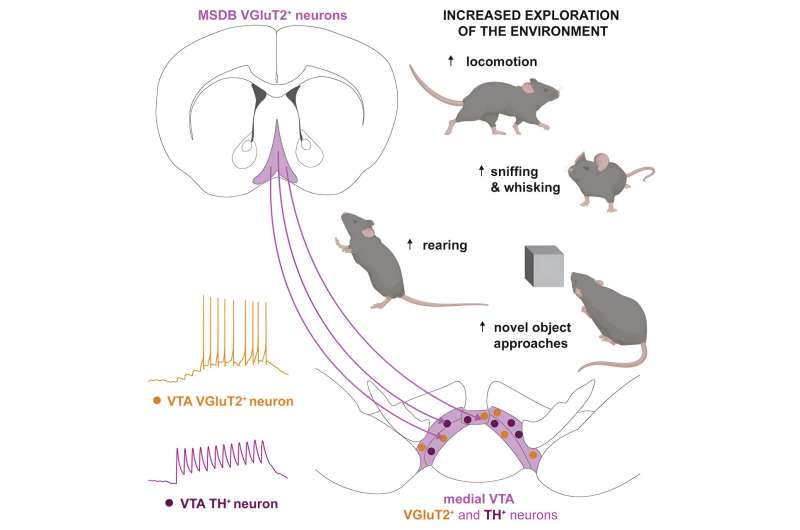This article has been reviewed according to Science X's editorial process and policies. Editors have highlighted the following attributes while ensuring the content's credibility:
fact-checked
proofread
Neuronal circuit sheds light on the biological basis of curiosity

Scientists at the Leibniz Institute of Neurobiology (LIN) in Magdeburg have been able to demonstrate for the first time a previously only suspected neuronal circuit between two key regions of the brain. There is a dynamic balance between these two areas of the brain that determines whether the fear of novelty or its attraction prevails. The newly discovered circuit conveys the drive to explore the environment and, thus, to pursue curiosity.
This discovery sheds new light on the biological basis of human curiosity and could have far-reaching implications for the understanding and treatment of diseases that limit the ability and motivation to seek and process new information. These include mental illnesses such as depression, schizophrenia, autism spectrum disorders, and learning disorders.
The current study focuses on the interaction between the medial septum, an area that interfaces between emotions, memory, and non-voluntary physiological functions, and the ventral tegmental area, which serves a crucial role regarding reward and motivation.
The interaction of these two brain areas drives the organism to explore the environment, even when there is no immediate need or reward. This undirected search for information, that is, curiosity, has an important evolutionary significance, as knowledge about the environment increases the probability of survival.
By using optogenetic methods in mice, meaning the targeted switching on and off of a neuronal circuit, Dr. Petra Mocellin and her team were able to observe how the activity of nerve cells drives curiosity while it is inhibited when the circuit is inactive.
The team from the Department of Cellular Neuroscience at LIN was able to trigger precisely this curiosity-driven exploratory behavior in mice. The mice in which this circuit was activated showed a significantly increased interest in unknown and potentially fear-inducing environments. To identify this, the scientists used artificial intelligence, which analyzed the behavior of the mice better than any human could. The LIN is now investigating how these findings can be used for humans and society.
The work is published in the journal Neuron.
More information: Petra Mocellin et al, A septal-ventral tegmental area circuit drives exploratory behavior, Neuron (2024). DOI: 10.1016/j.neuron.2023.12.016



















